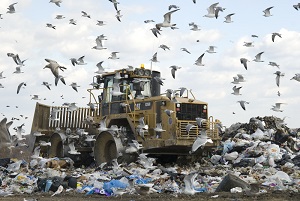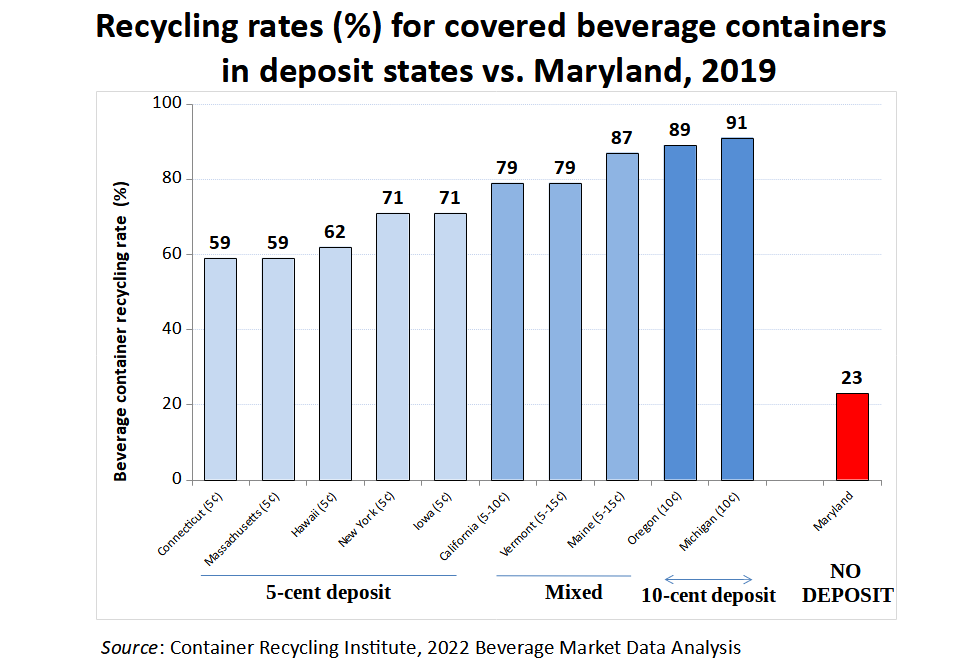Join us in Reducing, Reusing, and Recycling
to conserve resources, reduce solid waste,
and protect the environment!
Did you know that...
- Maryland generates nearly 14 million tons of solid waste annually?[1] About two-thirds of municipal solid waste is paper, plastic, food scraps, and yard waste.[2]
- Landfills release methane – a potent greenhouse gas – from anaerobic decomposition of organic material. They can also contaminate groundwater.

- Only about a quarter (23%) of the 5.2 billion beverage containers sold in Maryland in 2019 were recycled and reused in some other form. An estimated 4 billion containers were wasted – left in the environment, in landfills or as litter, or incinerated. In states with container deposit programs, the recycling and reuse rate is three times higher!
- The recycling rate for paper is only about 50%, and for plastic and food scraps is less than 10%. What is not recycled is landfilled, incinerated, or litters our roadways and waterways.
- Trash incinerators release dioxin and heavy metals in the air, produce toxic ash that must be landfilled as hazardous waste, and promote continuous generation of waste to ‘feed the beast’.
- The Maryland State Highway Administration spent nearly $8 million in FY 2019 removing litter on state-maintained roads. This doesn’t include hundreds of miles of roads cleaned up by volunteers and businesses. About 80% of marine pollution originates on land, as litter, and most of it is plastic.

We can change this picture!
These are sobering statistics, but they also point to huge opportunities to reduce solid waste through reducing packaging and single-use disposable containers, reusing materials, composting, and recycling.
The benefits are compelling – conserving natural resources, creating new and sustainable jobs, preventing adverse health impacts, and reducing waste disposal costs, greenhouse gas emissions, litter and marine pollution, and the need for landfills and incinerators.
Join the campaign to reduce solid waste!
Local and state-wide actions are equally important! Development and implementation of local solid waste programs are the responsibility of Maryland’s counties and Baltimore City. In 2019, the General Assembly passed the first statewide ban on foam food containers, after local bills were passed in Anne Arundel, Montgomery, and Prince George’s Counties and the City of Baltimore. Activists in Frederick and Carroll counties prevented construction of a dirty and expensive trash incinerator. At the state level, targets and regulations are adopted, and state-wide solid waste and recycling programs are implemented.
[1] 13.6 million tons, CY2017 data: https://mde.maryland.gov/programs/LAND/AnalyticsReports/MSWMaDR%20%2718.pdf
[2] 2016 Maryland Statewide Waste Characterization Study: https://mde.maryland.gov/programs/LAND/SolidWaste/Documents/2016%20Maryland%20Statewide%20WCS%20Study.pdf
